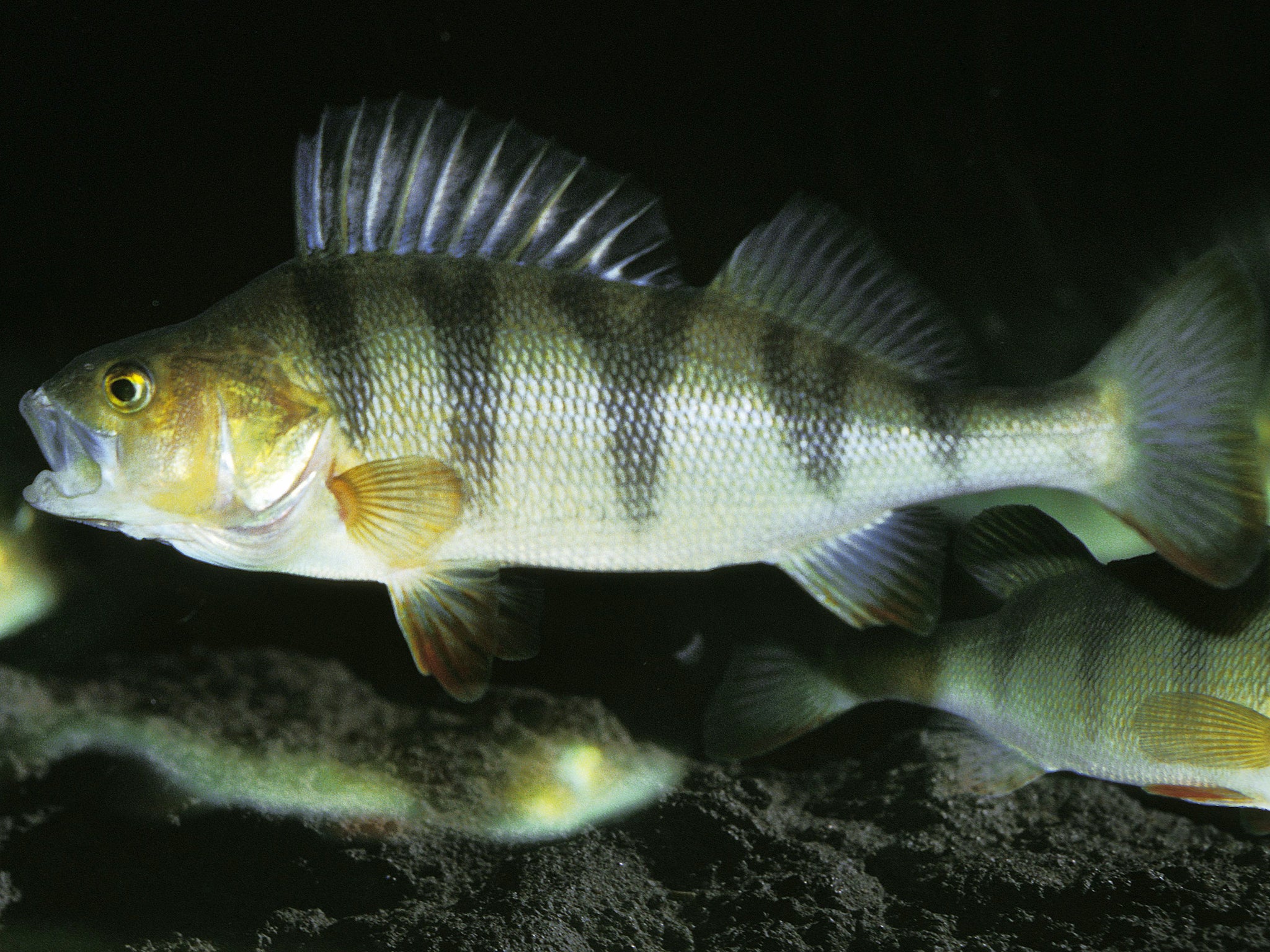Something fishy going on... Antidepressants contaminating rivers make perch antisocial

Your support helps us to tell the story
From reproductive rights to climate change to Big Tech, The Independent is on the ground when the story is developing. Whether it's investigating the financials of Elon Musk's pro-Trump PAC or producing our latest documentary, 'The A Word', which shines a light on the American women fighting for reproductive rights, we know how important it is to parse out the facts from the messaging.
At such a critical moment in US history, we need reporters on the ground. Your donation allows us to keep sending journalists to speak to both sides of the story.
The Independent is trusted by Americans across the entire political spectrum. And unlike many other quality news outlets, we choose not to lock Americans out of our reporting and analysis with paywalls. We believe quality journalism should be available to everyone, paid for by those who can afford it.
Your support makes all the difference.Drugs used to treat anxiety and depression are contaminating rivers and streams where they are building up in concentrations that can affect the behaviour of wild freshwater fish, scientists have found.
Significant amounts of a benzodiazepine drug called Oxazepam, which is widely used to treat anxiety, are being flushed into rivers from sewage works. The concentrations are too low to be considered a health risk to humans but a study has shown they can still affect fish.
Benzodiazepines, such as Valium, are one of the most widely prescribed groups of drugs. They can be excreted from the body intact and persist in the treated effluent water released from sewage works into rivers, scientists said.
A study carried out in Sweden found that the relatively low concentrations of benzodiazepines commonly found in rivers throughout Europe, including Britain, can significantly affect the behaviour of the European perch.
The scientists found that perch exposed to extremely small concentrations of Oxazepam, as low as a fraction of a microgram per litre of water, were less sociable, bolder and ate faster than fish that were not exposed to the drug.
The scientists believe the subtle behavioral changes seen under experimental conditions indicate how the wider freshwater ecology could be affected by this kind of hidden environmental pollution.
They said that pharmaceutical compounds released into the aquatic environment might pose a greater problem than hitherto realised and that more should be done to degrade the chemicals before being released in the treated effluent water from sewage works.
“The solution to this problem isn't to stop medicating people who are ill but to try to develop sewage-treatment plants that can capture environmentally hazardous drugs,” said Jerker Fick of Umeå University in Sweden, who was part of the team.
“These drugs are not toxic or harmful in small doses, and are used to treat patients for therapeutic reasons. So there has not been that much research into what it does when it gets into our waterways,” Dr Fick said.
A survey of the River Fyris in Sweden, which receives wastewater effluent from the city of Uppsala, found concentrations of oxazepam of around 0.58 micrograms per litre. “These concentrations are comparable to hose of benzodiazepines reported in other European and American waters,” the scientists report in the journal Science.
It was one of 21 pharmaceuticals found in the water sampled by the researchers that have a similar effect to Oxazepam, the scientists said.
Tomas Brodin of Umea, the lead author of the study, told the American Association for the Advancement of Science meeting in Boston that when wild perch were exposed to similar concentrations they exhibited subtle but distinct changes to their natural behaviour.
“Perch that were exposed to Oxazepam lost interest in hanging out with the group, and some even stayed as far away from the group as possible,” Dr Brodin said.
“While alone, fish that were exposed to Oxazepam dared to leave safe refuge and enter novel, potentially dangerous areas. In contrast, unexposed fish stayed hidden in their refuge. The exposed fish seemed much less stressed and scared, behaving calmer and bolder,” he said.
Fish exposed to the drug ate faster than non-exposed fish. This could affect the wider ecology because more voracious perch would eat more of the zooplankton that might otherwise prevent algal blooms, Dr Fick said.
'We found distinct behavioural changes in the perch, even at low levels of exposure. The changes can be seen as both beneficial or detrimental depending on the ecology,“ he said.
”The fish became bolder and fed faster, which is a good thing if there are no predators around, but could be risky if there are,“ be added.
”It could also have a knock-on effect on the surrounding environment. If the fish eat more zooplankton, then there is less in the water. Zooplankton eat algae, so without them there could be algae blooms.“
Join our commenting forum
Join thought-provoking conversations, follow other Independent readers and see their replies
Comments